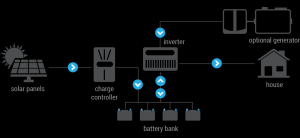ESS FAQ
An ESS Is What?
A device or collection of devices constructed together with the ability to store energy to subsequently supply electrical energy is known as an energy storage system, or ESS, and it is sometimes abbreviated as such. The most frequent kind of new installation is a battery ESS.

What Benefits Does ESS Offer?
There are a variety of advantages for ESS, like:
Additional Renewables
Wind and solar power generate electricity when he wind is blowing or the sun is shining. The usage of ESS as a backup for these enables customers to benefit from the electricity produced when renewable energy sources aren’t.
Which Risks Are Associated with ESS?
Due to the increase of ESS installations, have a deeper understanding of the risks associated and to take more thorough precautions, which is necessary. The dangers consist of:
Unused Energy
There is a shock hazard with ESS, just like with most electrical equipment, but it stands out because ESS frequently retains electricity long after being involved in a fire. Since the terminals are frequently damaged, it creates a risk to personnel doing overhaul after a fire and is challenging to discharge.
Batteries that are protected by metal or plastic casings inside of bigger cabinets are the typical component of Deep Seated Fires (ESS). These levels of defend can keep water from reaching the fire’s hearth while also preventing system damage. This means that since it is frequently challenging to cool the hotter area of the fire, it requires a lot of water to efficiently dissipate the heat produced by ESS fires.
How Do ESS Failure Modes Work?
Mechanical Violence
When a battery is subjected to mechanical abuse, its physical integrity is jeopardized.
Thermal Neglect
A battery can sustain thermal damage if it is exposed to outside heat sources.
Abuse of electricity
The battery can be abused electrically if it is overcharged, charged too quickly or at a high voltage, or drained too quickly.
Which NFPA Rule Addresses ESS Installation?
Review the standards of NFPA 855, if you are installing ESS for either new construction or renovation, standard for the Installation of Energy Storage Systems.
How can I Stop Getting Low Battery Alerts?
Background: It makes sense to receive a warning when the battery is nearly low in a backup system or off-grid system. However, in a system where the battery is primarily used to maximize self-consumption and it is common for the battery to completely discharge every day, receiving a notification is not necessary.
Access the Multi or Quattro Menu, choose Setup, then Alarms to turn off the Multi’s low-battery pop-up alert on the CCGX. Set the alarm for low DC voltage to “Alarm only.” It is unable to turn off the inverter/charger’s red blinking LED, which alerts users when their batteries are low.
When Feedback Is Turned Off, Are the Loads Powered by MPPT?
Yes. ESS will minimize grid use, ideally to 0W, whether feed-in is enabled or not. Even when the batteries are full, it makes the MPPT Solar Chargers work hard.
A little additional information regarding the chosen modes:
Regardless of how much or how little power is required, the batteries will provide it in Optimize mode. Until the battery is completely depleted or the load reaches the inverter’s maximum capacity, the Grid metre will remain at 0W.
In the Keep Batteries Charged mode, loads cannot be powered by the batteries unless the grid is down. The loads will be powered by PV power as it becomes available. When the batteries are full, there is a known problem with the MPPT solar charger’s “Keep batteries charged” option, which can lead to less output. Only when DVCC is turned off and the “Feed-in excess solar charger power” setting is turned off does this happen.
The following are the current solutions to the "Keep Batteries charged" problem:
Enable DVCC (check the CCGX manual to determine whether this is permitted for the utilized battery type, make, and model!)
The minimum SOC should be 100%, and the mode should be optimized. There is still a difference from the “Keep batteries charged” mode: the system won’t recharge the battery from the grid following a power outage even with this workaround.





